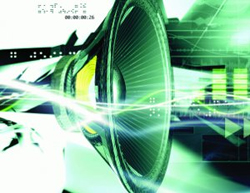Lossless audio refers to recording compression techniques that allow all recorded sounds to be present in their original form.
Essentially, it includes all the dynamic range from super-quiet to very loud, all the frequencies from subsonic to harmonic frequencies, stored in one of several digital codec formats.
Lossless audio recording is typically used for making master or archival recordings.
Contrasting to lossless is “lossy” audio, which is remarkably prevalent in the consumer audio world.
Examples of lossy audio include MP3 files on your phone or audio player, as well as audio carried by streaming media sources from the Internet, satellite and cable radio formats, selected video DVD and broadcast formats.
The primary reason lossy audio formats such as MP3 are deployed is storage capacity; if a standard CD carries one hour of material, and a lossless audio recording of the same capacity carries two hours of material, the seven hours of capacity using MP3 in the same space affords lots more potential material to be accessed in portable playback devices.
At the advent of portable players storage costs were high and the perception was that the market for MP3 and similar formats was not as critical as lossless audio formats.
Lossy audio is predicated on psychoacoustics, specifically the idea that human hearing, when presented with a loud sound and a quieter sound, will hear the loud sound.
Using algorithms, the content of the original recording is analyzed and quiet parts are eliminated from the recording. This technique essentially provides the increased efficiency of recorded times that we discussed.
The problem with that idea, of course, is that comparing an MP3 (or other) recording to an original master recording clearly will demonstrate what happens during the compression process. Dynamic range of the music, from quiet to loud, will be diminished. Warmth of instruments and vocals is reduced. Ambience, in the case of the recording hall, is compressed.
To the keen listener, the lossy format just doesn’t sound right. The music is there but it’s not all there, so to speak, and does not have the same immediacy and impact that the original or lossless format offers.
Lossless audio formats will give users the ability to record music and maintain all the goodness present in the original. Certainly, many versions of lossless formats exist, including Apple Lossless, Microsoft’s MPEG4 ALS, and Free Lossless Audio Codec (FLAC).
In applications where the audience and the reproduction equipment can support it, lossless recording makes increasing sense, especially as the cost of recording storage space diminishes.
That being said, there are many applications where lossy codecs should be deployed as it clearly increases the speed of downloading information off the Internet. In some installations, the noise floor is such that higher-resolution playback simply is not suitable and a compressed audio signal will handle the job just fine.
I do think it’s interesting that the mid-level audio market on the consumer side appears to be moving away somewhat from highest fidelity playback of two-channel audio and emphasizing surround-sound formats.
Is it because new audiences haven’t heard real high-quality audio playback?
Fred Harding handles technical sales and design at Capitol Sales. This article is courtesy of Commercial Integrator.






















